Soviet airfield defense during the war
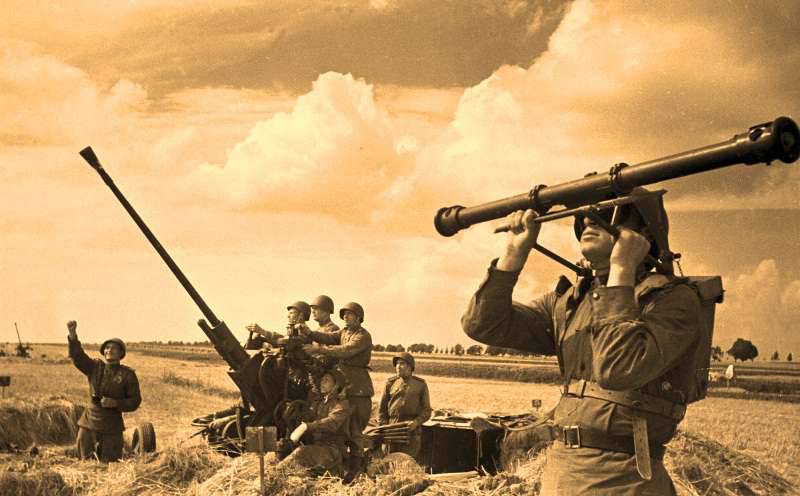
In the prewar years, Soviet military theoretical thought, assessing the possible nature of a future war, correctly determined not only the role of the air force, but also the need to organize air defense of airfields. So, even before the start of the Great Patriotic War, the directive of the USSR NKO from 25 on April 1941 provided for the formation of one hundred and sixty-six anti-aircraft artillery batteries to perform air defense tasks for airfields and other objects of the Red Army air forces. However, due to the lack of the necessary amount of material parts, batteries were formed extremely slowly and, moreover, unorganized. Therefore, in November 1941, by the directive of the Deputy Commander of the Air Force KA, their further formation was discontinued.
Thus, in the first months of the Great Patriotic War, the defense of airfields, which would meet the requirements of that time, in essence, did not exist. A very small number of full-time anti-aircraft weapons that were in the possession of airfield service battalions (3 total, quad-rifle anti-aircraft guns on the battalion, and even then not everywhere) could not provide airfield cover.
In preparation for the attack on the USSR, the German command set a task for its Air Force to gain air superiority in the very first days of the war and thereby ensure successful operations of the ground forces. 22 June 1941, over a thousand bombers struck 66 massively at our border airfields. First of all, those that had air regiments armed with new equipment were attacked. On the ground, more than 800 of our aircraft were destroyed (according to German 850 data).
The Soviet Air Force on this day made about 6 thousand sorties and in air battles shot down about 200 enemy vehicles. It should be noted that the Air Force of the Southern Front (Air Force Commander General F.G. Michugin) had almost no losses. This is due to the fact that a few days before the start of the war, the command of the Odessa Military District carried out a check of the combat readiness of the troops and aviation. Aviation units were relocated to field operational airfields. There, the aircraft were dispersed and camouflaged, and the flight crew was transferred to high alert. The fighter aviation regiments organized the duty of the links, worked out measures to alert personnel. Thanks to the measures taken, fighter pilots were able to meet the attack of fascist aviation in a timely and organized manner. Our losses amounted to only 6 aircraft, while the enemy missed a much larger number of aircraft. It should be noted that in other sectors of the Soviet-German front, where fighter aviation units were trained and gave a decisive rebuff, the enemy stopped raids on airfields.
The tactics of the German aviation was varied. Fighter aircraft (aircraft Bf.109 and Bf.110) operated on airfields that were located no further than 50-80 km, and, as a rule, in several groups at different altitudes. One of the groups distracted our fighters, while others attacked the airfield with a strafing flight, firing machine guns at planes on the ground. During the daytime, bomber aviation most often acted on advanced airfields under the cover of its fighters with single planes and groups of 3, 8, 10, and sometimes more planes, skillfully using the sun and cloudiness. Bombing, as a rule, was made from several visits. At night, the fascists sought to strike long-range airfields with single cars or in pairs with 5-10-minute intervals, making several visits from different directions and heights, using lighting bombs. Often bombers followed groups on the 2-3 aircraft. Above the airfield they dispersed in order to disperse the fire of anti-aircraft weapons and reduce its effectiveness. Sometimes the fascist German pilots used the following technique: 2-3 Ju-88 were attached to the tail of our reconnaissance aircraft, the landing gear was released above the airfield, dropped suddenly and dropped bombs from the height of no more than 500 and bombarded the aircraft on the ground. Thus, for example, 28 was produced on June 1941, a raid on the airfield of the Western Front's air force Old Bykhov.
Even a brief analysis of the actions of the enemy’s aircraft convincingly confirmed the need to organize reliable air defense of airfields. Seeking ways to solve this important problem, the Red Army Air Force Command in August 1941, to improve the organization of the interaction of strike aircraft (bomber and attack aircraft) with fighters, and, in addition, to reliably cover them on their airfields, decided to have in the newly formed near bomber and assault air regiments of one fighter squadron. Although this improved the organization of the interaction of strike aviation with fighters in the course of jointly performing combat missions, it could not significantly affect the effectiveness of the air defense of aerodromes, since upon returning from a mission, fighters were not always able to repel enemy air raids and accompanied by the machines themselves are often the targets of the attack. A similar situation was created in the cases of the landing of their fighters on the airfields of bombers, in order to cover them.
The active actions of enemy aviation urgently demanded strengthening of the air defense of aerodromes, both by strengthening its organizational structure and incorporating additional air defense forces and assets into the air force. In connection with this, in December 1941 of the Red Army Air Force Rear Unit was formed by the 3 Division (5 man), who was in charge of ground and air defense, chemical defense, camouflage, mine service personnel of the Air Force facilities. The creation of such a small department did not completely solve the problem of air defense of aerodromes, since a unified management system was not organized, and the necessary number of anti-aircraft units and subunits were not allocated.
Of all the activities that the 3 department was trying to carry out, to some extent only two were allowed, moreover, far from being the main ones, namely: a masking department was created and a mine-engineer service was organized. Not being able to radically solve the issue of air defense of airfields, the department instructed aviation units to use all available anti-aircraft weapons, including trophy weapons. As a result, the most diverse anti-aircraft armament appeared in the units, but they were not always able to use them properly.
The serious problem of air defense of airfields remained unresolved. In September-October 1942, the issue of creating anti-aircraft units to cover the most important facilities of the Air Force was discussed three times at the State Defense Committee of the USSR, but this event was not quickly implemented due to industrial overload. In March, the 1943 airfield air defense regiment was formed to provide cover for the front-line airfields, consisting of three small-caliber anti-aircraft artillery batteries (MZA) and two anti-aircraft machine-gun companies in each.
At the same time, other measures were taken to strengthen the air defense system in the home bases of aviation. Thus, in the instructions of the Commander of the Air Force of the SC from 14 of May 1943 about organizing the struggle for air supremacy, it was noted that the enemy is trying with all his might to damage our aircraft on the ground. In this regard, it was required: to increase vigilance, disperse the material part; disguise it; check for personnel gaps; cover airfields from the air, using ambushes, air patrols, duty on the ground; to have at least one-third of the aircraft in all the bases of the fighters in readiness for departure one minute after the announcement of the alarm signal; the data arriving from VNOS posts, immediately to bring to parts and divisions.
Of exceptional importance was also assigned to the operational camouflage of operating airfields and the creation of a developed network of spurious ones. An analysis of the experience of these events shows that they well complemented the general defense system of aerodromes and increased its effectiveness. For example, the operational camouflage of operating airfields and the creation of false ones occupied an important place in preparing for the actions of aviation in an offensive operation on the r. Mius in 1943 year. By 15 August, around 40 false airfields were deployed here, which simulated combat activities. As a result, from 18 raids made by enemy aircraft from 1 to 31 in August, 16 was made to false airfields.
In the development of the instructions of the commander of the Red Army Air Force about organizing the struggle for air supremacy, new issues of interaction with the fighter and anti-aircraft units of the Air Defense Forces of the country were clarified and developed. The interaction between fighters based on different aerodromes became wider. In order to avoid losses, it was forbidden to take off from airfields blocked by fighters that had not previously been linked by combat. Deblocada was carried out by means of air defense in cooperation with the fighters of neighboring airfields.
In March, 1944, the responsibility for providing air defense of airfields and other important objects was assigned to the head of the rear of the Air Force KA. At the same time, the post of the head of the air defense of the Air Force KA was established with the subordination to it of a small apparatus to provide guidance to the air defense service.
During the war years there was a gradual increase in the number of anti-aircraft weapons in the air armies. Thus, in March 1944 of the year 17, the air army (commander General V.A. Sudets), in addition to fighter aviation units, had three regular airfield air defense regiments, four attached anti-aircraft artillery regiments of the GDGs and anti-aircraft machine gun companies of airfield service battalions.
The cover issues for aviation bases began to find a more concrete expression in the orders of the commanders of the air armies. Some of them contained a categorical prohibition to land aircraft on advanced airfields that were not covered by air defense weapons. This has already indicated that air defense, organized in operational formations of the Air Force, has earned full recognition as a force, capable of interacting with other means, as well as with the help of passive defense measures, to ensure the safety of aviation, which was on the airfields.
Many aviation commanders and their headquarters, knowing full well that our aviation, due to the weak organization of airfield cover, suffered more losses on the ground than in the air, began to pay more attention to the air defense issues of the airfields. An example is the organization of an air defense system of the 11 th 15 mixed air corps of an air force based at the air hub Chuprovo in March 1944. In the order of the commander, the actions of German aviation were assessed and measures were described to repel air raids on the air garrison. The headquarters developed a detailed combat plan together with the attached 243 anti-aircraft artillery regiment. It called the responsible executives, assigned tasks to the commanders of the units, provided for conducting aerial reconnaissance, determined the degree of combat readiness of fighters and anti-aircraft weapons, methods of their actions, the interaction between fighter aircraft and anti-aircraft artillery, the use of small arms and turret machine guns installed on aircraft. Particular attention was paid to the organization of communication and control during the reflection of raids. The order and plan were carefully studied by all personnel, so each fighter and officer knew his place, task and method of its implementation.
It can be said with confidence that, where the commanders of aviation units, to which all available forces and means were practically subordinate, paid more attention to the air defense, the losses on the ground were much smaller. At the same time, it is necessary to recognize that the theory of air defense of the basing of aviation somewhat lagged behind the growth rates of air defense forces and assets allocated by the Air Force to organize the cover of airfields from air strikes. This is explained by the fact that military-theoretical work focused mainly on the development of the problems of the use of aviation in the interests of ensuring the successful conduct of operations by ground forces.
In 1944-1945, a more coherent air defense system of airfields began to be created. It included: the organization of reconnaissance of the air enemy, aviation and anti-aircraft protection, extensive use of passive means of protecting airfields, that is, in essence, the whole complex of measures constituting the main content of air defense. However, they were sometimes carried out without proper interconnection between themselves, and especially with the air defense system of the ground forces, as a result of which the expended efforts and means did not always achieve the desired result.
In many offensive operations with the deployment of troops in the original areas, fighter aviation aerodromes were built in 20-40 km, assault - in 30-70 km and bomber - in 60-140 km from the front line. Such a relatively small removal of the air army airfields led to the fact that some of them found themselves in the zones of anti-aircraft units and formations covering the troops of the first echelon of the front. Therefore, the direct protection of these airfields could be carried out by a small number of standard anti-aircraft weapons, especially when our aviation dominates the air. But such favorable conditions existed, as a rule, not for long. With the transition of the Soviet troops on the offensive began to move and anti-aircraft units. The advanced airfields remained without anti-aircraft cover for the ground forces already in the second half of the first day of the offensive.
During the offensive, at least one third, and sometimes more available anti-aircraft weapons were constantly in motion, which weakened the cover and increased the likelihood of enemy strikes, especially on advanced airfields located on the main line.
To prevent air strikes in some major operations, such as the Belarusian, Vistula-Oder, Berlin, and others, despite the very tense situation and air battles, in which both sides suffered significant losses, fighter units on duty were provided to cover the airfields. But in most cases such a task was carried out by regular anti-aircraft weapons.
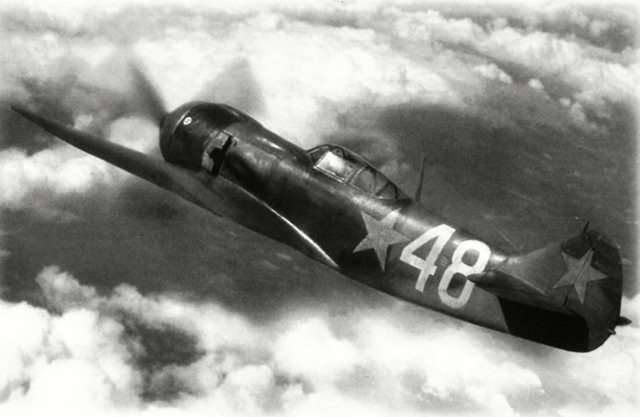
During the war, the amount of anti-aircraft weapons allocated to cover airfields varied within very considerable limits: from anti-aircraft machine-gun installations to anti-aircraft regiments, and sometimes even more. And this is quite natural, since practically covering all airfields with the same amount of air defense weapons was not possible, and there was no need for that.
With a lack of anti-aircraft weapons, they were allocated more to airfields that were not covered by fighters. The airfields with artificial runways were particularly well defended, as they had better throughput, and they usually had a larger number of aircraft (sometimes up to 150).
The nature of the construction of the air defense of the airfield depended on the amount of air defense assets allocated for this purpose, the caliber of anti-aircraft batteries, the location of the main cover objects (airplanes, warehouses for various purposes, airfield facilities, etc.) and the tactics of enemy aviation. During the raids, the Germans most often sought to destroy the runway, stopping at it, usually at an angle of 15-30 °. Therefore, anti-aircraft units were located at the aerodrome in such a way as to ensure the greatest density of fire along the runway in the 30-60 ° sector in the direction of take-off and landing. This in the best way provided the possibility of take-off of the aircraft during the blocking of the aerodrome and safety during landing, after the combat mission was completed.
As an illustrative example, we can take the case that took place on 19 on April 1942 of the year at the Slavyanoserbsk aerodrome, where the 494 of the Air Force of the Southern Front was based. Senior Lieutenant N. Chernov was wounded in an air battle, left the fighters attacking him with a dive and landed on the fuselage. The enemy tried to set fire to his Yak-1 on the ground, but our anti-aircraft battery, which was covering the airfield, opened fire on time and did not allow enemy fighters to do it.
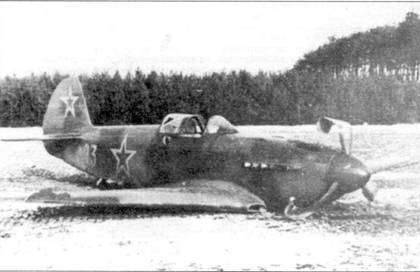
The control of anti-aircraft equipment covering the airfield and their interaction with fighter aircraft was based on general principles, taking into account the current situation. The main issues of interaction were: bilateral information on the ground and air situation; the order of interaction in repelling fighters from the airfield being covered up and blocking off by enemy aircraft; cutting off anti-aircraft artillery fire by enemy fighters when returning their aircraft to the airfield; ensuring the safety of our aviation; the use of anti-aircraft weapons to combat ground enemy; coordinated actions with air defense systems of neighboring airfields or other objects.
The presence of anti-aircraft artillery at the aerodrome forced German aircraft to devote up to a third of the forces during the raids to suppress it, which naturally reduced the effectiveness of strikes against aircraft on the ground.
As you can see, in the air armies (like combined arms and tank) During the war, a certain air defense system was created. But, unfortunately, some aviation commanders and commanders did not always use it effectively. Sometimes the issues of organizing air defense of airfields were not reflected even in plans for the combat use of the air forces of the fronts.
The most difficult problem was the protection from air strikes of airfields during offensive operations. The difficulties of solving this problem consisted, firstly, in the absence of reserve anti-aircraft units in the air armies that could be sent to new airfields in advance with the aim of organizing their cover before the air connections arrived there; secondly, in the absence of a sufficient number of vehicles. It was not always planned to move the existing anti-aircraft units in accordance with the plan for the redeployment of regiments and divisions.
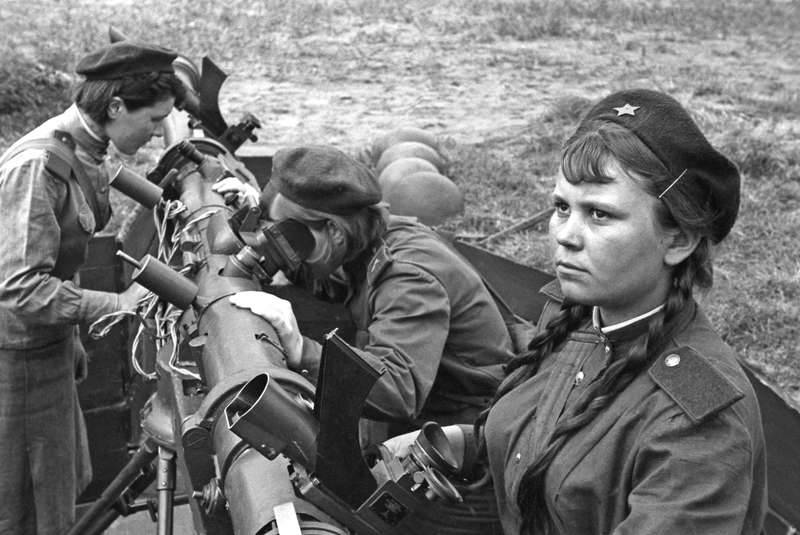
The underestimation of the role of air defense of airfields led and leads to large unjustified losses of aircraft on the ground. This is convincingly shown by the experience of not only the Second World War, but also subsequent local wars.
Sources:
The team of authors. Soviet Air Force in World War II 1941-1945 M .: Voenizdat, 1968. C. 27-37.
Pankin V. Evolution of the organizational structure of the Air Force, methods and methods of organizing control and interaction during the Great Patriotic War // The role of the air forces in the Great Patriotic War 1941-1945 M .: Voenizdat, 1986. C. 73-74,77-78.
Strusevich A. On the air defense of airfields // Militaryhistorical magazine. 1975. No. 5. S. 29-33.
Tour M. Development of air defense in the Great Patriotic War // Military-Historical Journal. 1982. No.1. C. 56-64.
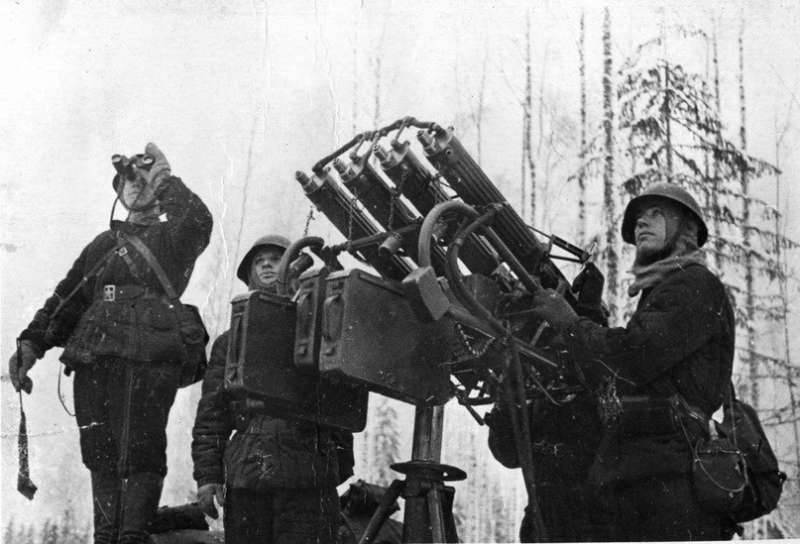
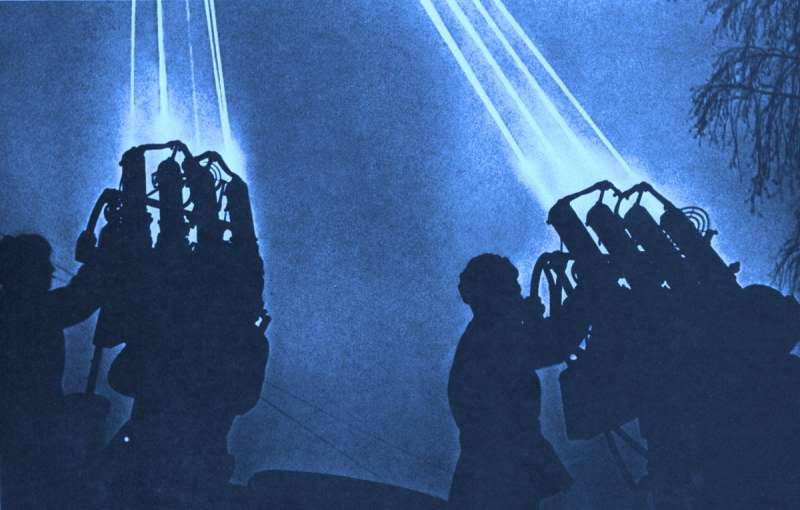
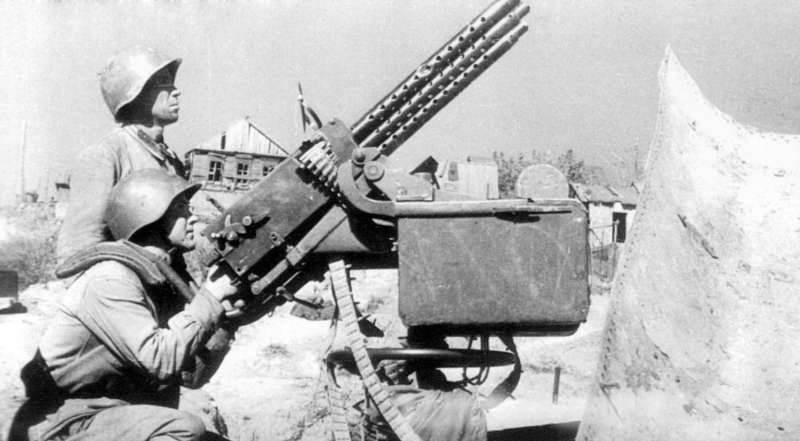
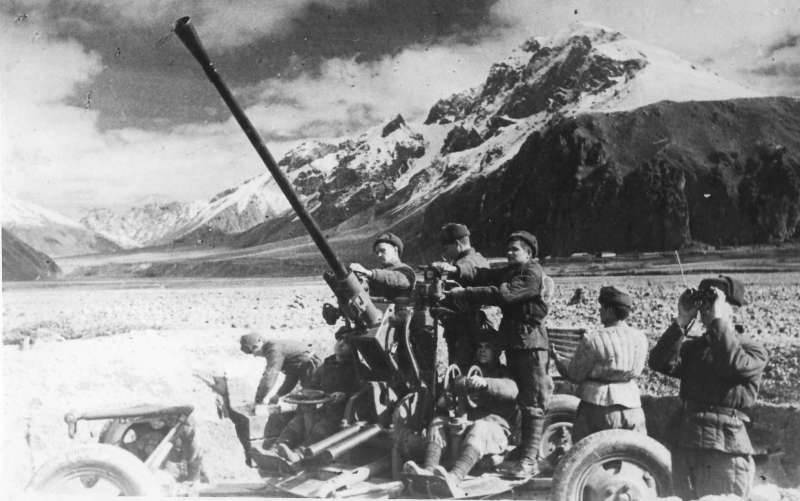
Information